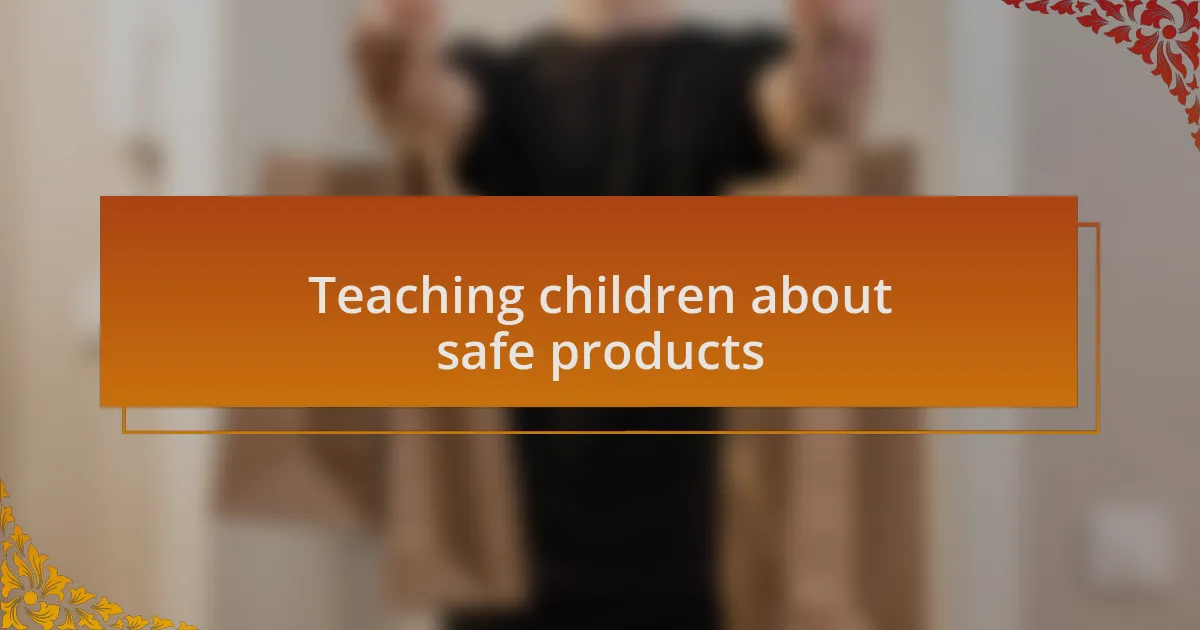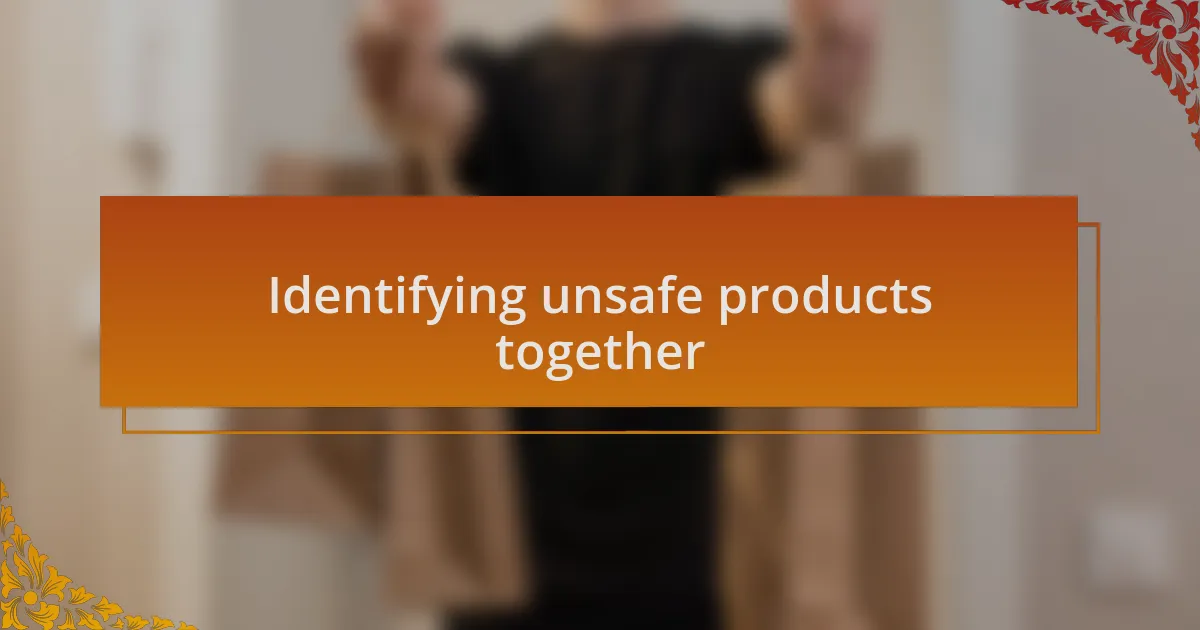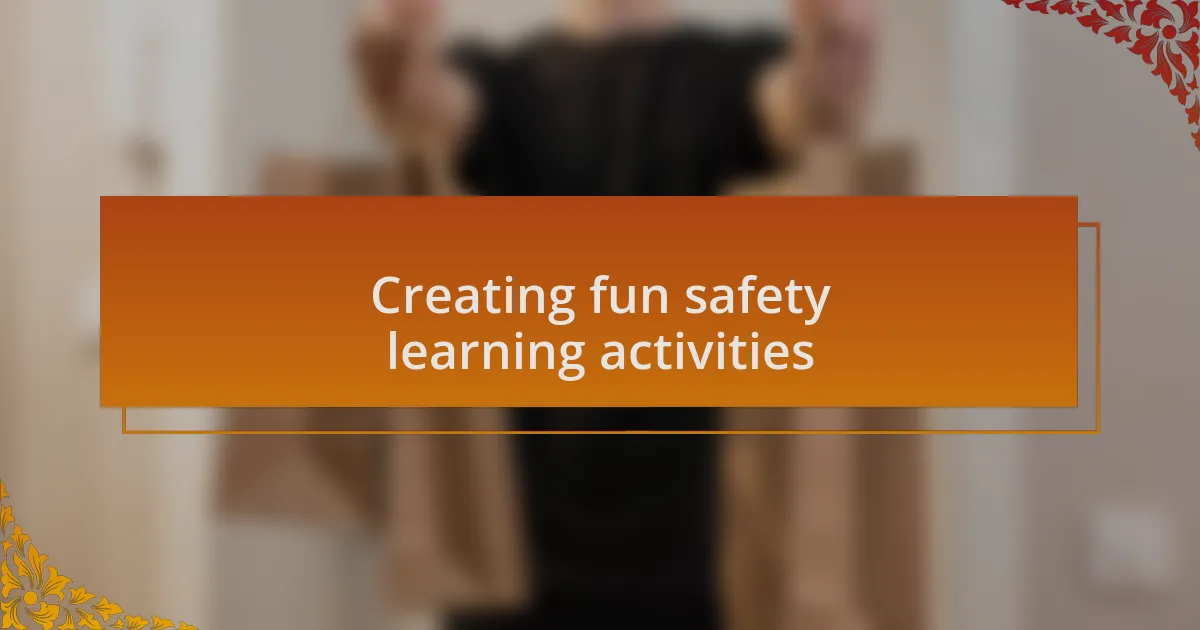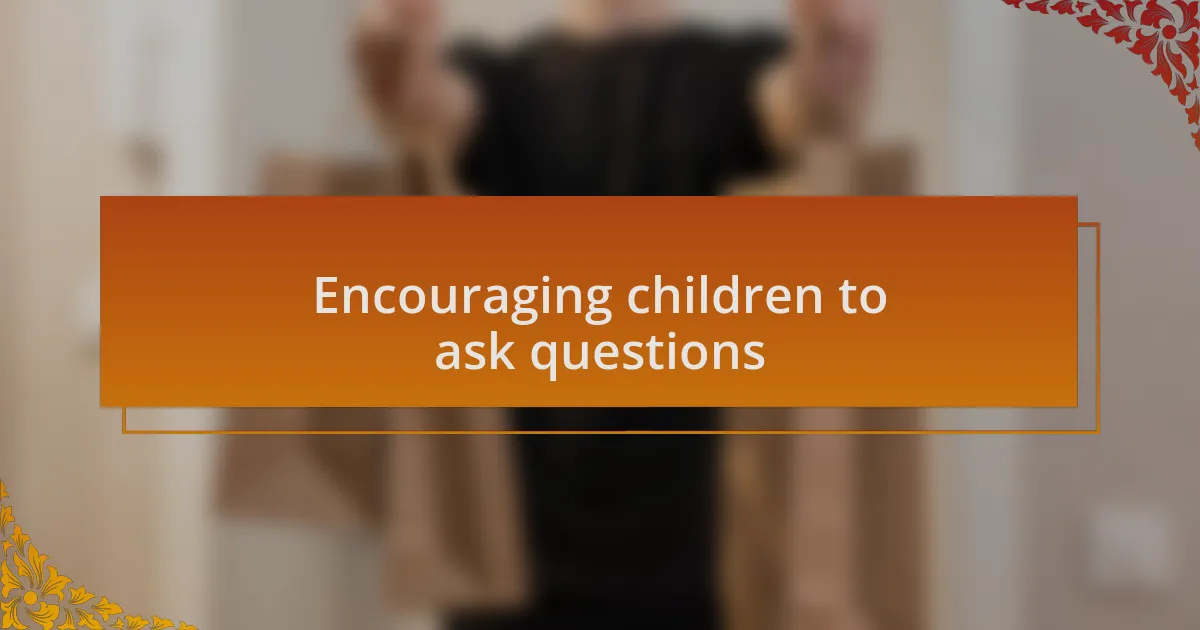Key takeaways:
- Teaching children about consumer protection principles helps them understand product safety and make informed decisions, fostering responsibility and critical thinking.
- Engaging activities, like scavenger hunts and craft projects, make learning about safety interactive and fun, solidifying important lessons in children’s minds.
- Encouraging children to ask questions about their surroundings promotes awareness and curiosity, helping them develop a vigilant approach to safety.

Understanding consumer protection principles
Understanding consumer protection principles is fundamental for ensuring that individuals, including children, engage safely with products. I remember a time when my daughter was curious about a toy that had been recalled due to safety issues. It struck me then how vital it is for young minds to grasp why these protections exist. How can we expect them to make safe choices without first understanding the risks?
Consumer protection principles highlight the right of consumers to have access to safe products and clear information about them. I often think about how my own experiences at the grocery store serve as teachable moments. When my children ask why we choose certain brands over others, I seize the chance to explain how some companies prioritize safety. It’s a simple yet powerful way to instill a sense of responsibility and awareness.
Moreover, these principles empower consumers to make informed decisions. I once facilitated a discussion with my children about advertising tactics and safety claims. It was enlightening to see their reactions as they began to question advertisements they had previously accepted at face value. Encouraging this critical thinking not only promotes safety but helps them understand that they have a voice in the marketplace.

Teaching children about safe products
When I first introduced my children to the world of product safety, it was through a simple scavenger hunt in our home. We searched for items that had safety labels or warnings. This interactive approach not only made it fun but helped them connect the dots between a label and understanding potential hazards. I still remember the look on my son’s face when he discovered that not all toys are made equal, sparking a deeper conversation about why some products are preferable.
One day, we encountered a new gadget that claimed to be the “safest ever.” Instead of just accepting that claim, I encouraged my children to investigate. We sat down together to look up safety certifications and reviews online. It was a revelation for them to see how independent sources validate safety, and I could see the gears turning in their minds. This hands-on exploration fostered an environment where questioning and research became second nature.
As we talk about safe products, I often share stories of products I wish I had scrutinized better. I once bought a cooking tool that seemed safe but ended up being poorly made. My children learned that safety can sometimes vary widely, even in items we use daily. This lesson resonated with them, showcasing that they have a role in ensuring their own safety and the safety of those around them. How empowering is it for children to realize they can influence their own choices?

Identifying unsafe products together
When we go shopping, I make it a point to involve my children in identifying potential unsafe products. For instance, while browsing for household cleaners, I asked them to read the labels aloud. Their puzzled expressions when they stumbled upon warnings about keeping products away from children were priceless. It made me realize that even the simplest labels can be eye-opening for them.
Just last week, we came across a popular toy that seemed appealing. I paused and asked my kids to look for safety certifications. They quickly figured out that while it had flashy marketing, there were no marks of approval from any recognized safety organizations. Witnessing their surprise was a reminder of how critical it is to maintain a skeptical eye, especially when something seems too good to be true.
I often use our grocery trips as a teaching moment, highlighting items that may seem harmless yet could pose risks. One day, when we passed by a shelf of brightly colored children’s magnets, I shared a story about a friend whose toddler had swallowed one, leading to a near disaster. This conversation not only made them more vigilant but also instilled a sense of responsibility in them. Isn’t it fascinating how a simple outing can turn into an impactful lesson?

Engaging children in safety discussions
Whenever I sit down with my kids to discuss safety, I try to create a relaxed atmosphere. One evening, we took turns sharing stories about times we encountered something unsafe. When my daughter recalled a friend who got hurt because she didn’t check her bike’s brakes, I noticed how engaged they all became. This sharing allowed them to connect real experiences with safety lessons, making the conversation feel relevant and important.
I’ve found that using everyday situations helps spark deeper discussions about safety. After watching a commercial for a flashy new gadget, I asked my children what they thought about its safety features. Their initial excitement shifted to skepticism when we explored the potential hazards together. It’s incredible how quickly they begin to understand that glitz doesn’t guarantee safety. Reflecting on their reactions, I can’t help but feel proud of their growing ability to question and evaluate the world around them.
Integrating safety conversations into our daily lives has transformed how my children perceive their surroundings. Just last week during dinner, I casually mentioned the importance of checking labels on food products. My son chimed in, recalling a school project on harmful additives. It was a powerful moment, revealing that they’re genuinely thinking about what safety means. Have you ever noticed how these discussions can unfold organically, revealing new insights and perspectives? That’s when I realize the impact of our ongoing dialogues about safety.

Creating fun safety learning activities
Creating engaging activities can transform how children perceive safety in a fun way. One memorable day, I set up a “safety scavenger hunt” in our backyard. I tasked my kids with finding everyday items and identifying whether they were safe or had potential hazards. Watching them race around, excitedly shouting out their findings, made me realize that hands-on exploration can really solidify lessons about safety in their minds.
I also love introducing craft projects related to safety. Recently, we made a colorful collage about safety gear—like helmet and knee pads—using old magazines. As they glued down images, we chatted about why each item matters. It was fascinating to see them articulate their thoughts, turning what could have been a mundane task into a vibrant conversation about personal safety and responsibility. How often do we overlook the fact that creativity can serve as an effective tool for learning?
Another approach I enjoy is integrating storytelling with safety themes. I once read a story to my children featuring a character who faced different unsafe situations and learned valuable lessons along the way. Their eyes widened with each twist in the plot, and I could see the wheels turning in their minds. It’s surprising how a simple narrative can inspire reflection and discussion about safety—and I often find myself asking them how the characters could have made different choices. These shared moments not only teach but also strengthen our bond.

Encouraging children to ask questions
Encouraging children to ask questions is an integral part of their understanding of safety. I remember a time when I was cooking, and my daughter asked why we use a cutting board. Instead of simply telling her, I invited her to explore the kitchen, noting where we keep sharp objects and explaining the risks involved. Watching her curiosity spark a deeper conversation was a reminder that questions are gateways to knowledge.
Sometimes, I take advantage of everyday situations to prompt inquiry. Once, during a family outing, we passed by an open construction site. My son pointed out the orange cones and wanted to know what they meant. Instead of brushing it off, we had an impromptu lesson on construction safety. This not only satisfied his curiosity but also instilled a sense of vigilance about his surroundings.
I often find that the more questions I encourage, the more confident my kids become in speaking up about safety. When they inquire about the fire alarm, for example, I seize the opportunity to discuss emergency preparedness. I believe that fostering this habit helps empower them to seek clarity in various situations, not just about safety but in life overall. After all, isn’t it essential for our children to feel safe enough to voice their concerns?